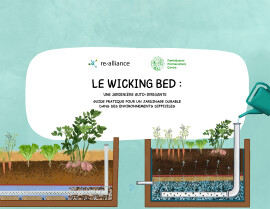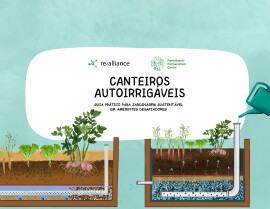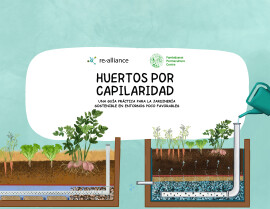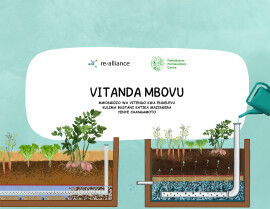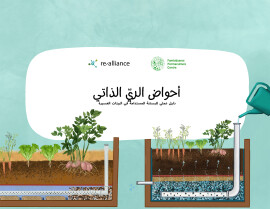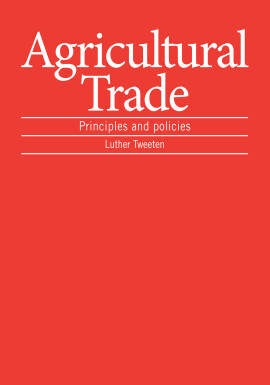
Agricultural Trade
Principles and policies
A complete coverage of strategic trade theory and application, imperfect competition, market power, and the political economy of agricultural trade. An easy-to-use analysis of trade principles, institutions, and policies.
Published: 1992
Pages: 336
Paperback: 9781853391583
| List of Tables and Figures ix | |||
|---|---|---|---|
| Preface xiii | |||
| Introduction 1 | |||
| Other Indicators of the Importance of Agricultural Trade, 2 | |||
| Some Historical Developments, 6 | |||
| New Developments in World Trade, 10 | |||
| Outline, 13 | |||
| References, 14 | |||
| Conceptualizing Comparative Advantage and the Gains from Trade 17 | |||
| Absolute Advantage, 17 | |||
| Comparative Advantage, 19 | |||
| Modern Theory of Comparative Advantage and Gains from Trade, 24 | |||
| Resource Endowment and Trade, 35 | |||
| Arguments for Trade Barriers, 40 | |||
| A Note on the Theory of the Second Best, 41 | |||
| References, 42 | |||
| Annex to Chapter 2: Proof of Heckscher-Ohlin Theorem, 44 | |||
| Measuring Comparative Advantage, Protection, and the Gains | |||
| from Trade Liberalization 49 | |||
| Policy Interventions, 49 | |||
| Nominal Protection Coefficient, 49 | |||
| Exchange Rate Distortion, 56 | |||
| Effective Protection Coefficient, 58 | |||
| Domestic Resource Costs: Measuring Comparative Advantage, 61 | |||
| Producer and Consumer Subsidy Equivalents, 64 | |||
| Classical Welfare Analysis, 67 | |||
| A Note on Competitive Advantage, 72 | |||
| Conclusions, 74 | |||
| References, 74 | |||
| 4 Border Interventions: Taxes, Subsidies, and Quotas 77 | |||
| Interventions by Importers, 78 | |||
| Interventions by Exporters, 87 | |||
| Import and Export Tax Symmetry, 95 | |||
| Conclusions, 96 | |||
| References, 96 | |||
| 5 Agricultural Commodity Programs and World Trade 99 | |||
| Farm and Food Commodity Price Ceilings, 100 | |||
| Productivity and Trade, 102 | |||
| American Commodity Programs, 105 | |||
| Mandatory Controls, 110 | |||
| Self-Sufficiency Rice Policy in Japan, 112 | |||
| European Community Policy, 115 | |||
| Conclusions, 120 | |||
| References, 121 | |||
| 6 Macroeconomic Policy, Exchange Rates, and Trade 123 | |||
| The Foreign Exchange Market, 125 | |||
| Determinants of Demand and Supply of Foreign Exchange, 129 | |||
| Foreign Exchange, Supply-Demand Equilibrium, and Price Response, 134 | |||
| Balance of Payments, 141 | |||
| Macroeconomic Linkages, 143 | |||
| The Economic Degradation Process, 147 | |||
| Conclusions, 152 | |||
| References, 153 | |||
| Annex to Chapter 6: Derivation of Marshall-Lerner Condition, 155 | |||
| 7 Introduction to Strategic Trade Theory 157 | |||
| Genesis, 157 | |||
| The Theory of Games, 159 | |||
| Theory of Duopoly, 163 | |||
| Conjectural Variations, 175 | |||
| Appropriateness of Strategic Trade Theory, 177 | |||
| References, 178 | |||
| 8 Strategic Trade Theory, Market Power, and the Political Economy of Trade 181 | |||
| Relating Strategic Trade Analysis to Traditional Analysis, 181 | |||
| Tariffs, Quotas, and Imperfect Competition, 182 | |||
| Gains from Market Power, 185 | |||
| Grain Export Industry Performance, 194 | |||
| Reinterpreting Orthodoxy in the Context of Modern Trade Theory, 196 | |||
| Forms of Trade, 198 | |||
| Other Political-Economic Considerations, 200 | |||
| Conclusions, 201 | |||
| References, 202 | |||
| 9 Institutions and Trade Policies 205 | |||
| International Monetary Fund, 205 | |||
| World Bank, 208 | |||
| General Agreement on Tariffs and Trade (GATT), 210 | |||
| International Commodity Agreements, 219 | |||
| Bloc or Regional Integration Institutions, 224 | |||
| Conclusions, 227 | |||
| References, 228 | |||
| Annex to Chapter 9: The General Agreement Articles as of 1989, 230 | |||
| 10 Major Players in World Trade 233 | |||
| Three Economic Superpowers, 233 | |||
| Other Players, 238 | |||
| Third-World Developments, 242 | |||
| Justifications for Trade Barriers in Today's World, 245 | |||
| Conclusions, 247 | |||
| References, 248 | |||
| 11 American Agricultural Trade Policy 251 | |||
| US Trade Institutions for Formulating and Administering Trade Policy, 251 | |||
| US Trade Restrictions, 254 | |||
| Agricultural Export Assistance, Preferences, and Promotion, 256 | |||
| Economic Development Assistance, 261 | |||
| New Directions for Trade Policy, 264 | |||
| Trade Negotiation Strategy, 270 | |||
| Conclusions, 279 | |||
| References, 280 | |||
| 12 Agricultural Trade Models 283 | |||
| Theoretical Research, 283 | |||
| Empirical Models, 285 | |||
| References, 290 | |||
| Annex A to Chapter 12: A Multiregion, Multicommodity, Nonspatial, | |||
| Partial Equilibrium, Empirical Model Using Constant Elasticity | |||
| Behavioral Equations, 292 | |||
| Annex B to Chapter 12: Policy Analysis with a Simple | |||
| Wheat Trade Model, 297 | |||
| Glossary 301 | |||
| Index 311 | |||
| About the Book and Author 319 |
Luther Tweeten
Luther Tweeten is Anderson Professor of Agricultural Marketing, Policy, and Trade in the Department of Agricultural Economics and Rural Sociology at the Ohio State University.

